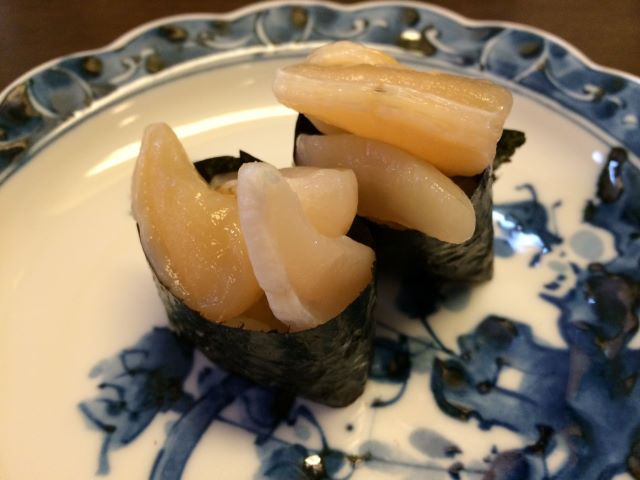Common name: Japanese pearl-oyster, Marten’s pearl oyster
Japanese name: Akoyagai (阿古屋貝、真珠貝)
German common name: Japanische Perlmuschel
Scientific name: Pinctada martensi (Dunker, 1880)
Nigiri sushi detail: Japanese pearl-oyster ligaments (Akoyagai) Nigiri sushi

The appearance of Japanese pearl-oyster ligaments (Akoyagai hashira)
Characteristics:
The Japanese pearl-oyster (Akoyagai) is distributed in inner bays facing the open sea from the Oga Peninsula southward on the Sea of Japan side and from the Boso Peninsula to the Nansei Islands on the Pacific side, as well as in the Seto Inland Sea. Akoyagai is also known as Shijugai (Shiju means pearl) and is used for pearl cultivation. It is found in the intertidal zone and on rocky reefs at depths of about 20 meters. The overall shape of the Akoyagai shell is roughly rectangular, with a shell length of 8-10 cm. Their color ranges from yellowish green to blackish purple.
When a foreign object such as a pebble enters the body, the mantle produces a secretion that envelops the foreign object in a nacreous layer. This is the pearl. Pearl cultivation is widely practiced throughout western Japan. Ago Bay in Mie Prefecture and Omura Bay in Nagasaki Prefecture are famous for pearl cultivation.
From December to January, fresh scallops are removed from Akoyagai after the pearls are extracted, and they are delicious. The scallops have a good texture and taste similar to Keen’s gaper (Mirugai). If overcooked, they become hard, so fresh ones are best eaten as sashimi. Compared to round clam ligaments (Kobashira), they are slightly firmer and have less bitterness and flavor. It is also delicious grilled with butter or steamed with sake. The mantle and other parts are then discarded.
Share this article